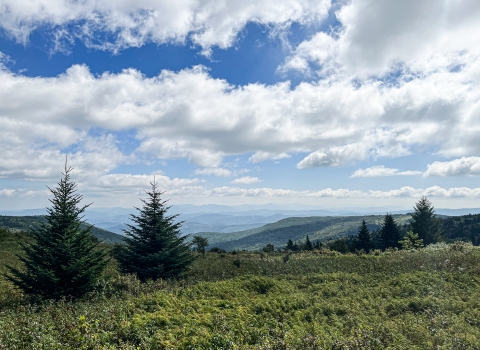I recently had the pleasure of cohosting a booth at the annual American Veterinary Medical Association (AVMA) Convention 2024 in Austin, Texas. The event had approximately 7,500 attendees from around the country, many of whom stopped by the booth to learn about our work. Both my colleague, Amy Brisendine, and I work at the International Affairs program’s Branch of Permits. Together, we informed veterinary professionals about the Convention on International Trade in Endangered Species of Wild Fauna and Flora (CITES), the Wild Bird Conservation Act (WBCA), and how important it is to understand the federal permit process for pet owners who travel internationally with their exotic pets.
We spoke to attendees who work in a range of fields including general practice vets, specialized surgeons, vet techs, emergency operators, and those in the medical supplies area. It was eye-opening for me to see how truly extensive CITES can be and we were able to establish cross sections of interests where the use of permits could assist other businesses. For example, we had a discussion with a company that supplies articulated skeletons and other individual bone pieces to vets. They had a Nile crocodile skull (CITES Appendix II, threatened under the Endangered Species Act) displayed at the front of their booth. We spoke about CITES and how we can assist them in importing and exporting their products and provided them with our outreach material so that they had easy access to the Service’s electronic permitting website for future reference.
We also had the chance to meet several exotic pet owners and educate them about CITES. One man stopped by our booth with a green-cheeked conure (CITES Appendix II, WBCA protected), who had never heard of CITES. We were able to use his real-life example to show how our office protects species like his pet bird and educate him on what permits he would need if he ever had to travel outside of the country with his bird. An exhibitor a few rows away from our booth was discussing their product with attendees with a ball python (CITES Appendix II) lounging on her shoulders. We passed along our handout material in the chance she ever needs to travel internationally with her pet.
Display materials and handouts consisted of “Traveling with Your Pet: Know before you go!” rack card and poster. They were essential in providing an opening to discussions of CITES and other international conservation laws and will help to prevent possible permitting delays for exotic pet owners. These products showed easy-to-understand ways to see if one’s exotic pet is protected under CITES and what permits pet owners need to travel with that pet. The graphics on the poster showed animals recognizable to the vets such as African grey parrots (CITES Appendix I, WBCA protected) and serval and domestic cat hybrids (CITES Appendix II). These animals provided a touchstone of connection for vets to consider these animals in a global manner that they may have not previously thought of. There were several instances of vets who didn’t realize that hybrid pets like servals are protected under CITES (within certain generations), and we were able to have discussions with them about why they are protected.
Also on display at the booth were seized items provided by the Service’s Office of Law Enforcement team in Houston, Texas. These included a handbag made of sea turtle leather, a mug made with elephant skin and impala horn, an ivory statue, sea turtle shell bangles, and a conch shell carved out of black coral. These were a hit especially with the children who came to the conference with their parents or guardians. While the professionals learned about CITES and international trade laws, the children were able to touch the wildlife items and learn about the species the products were made from. In turn, they would sometimes tell us what they knew about each animal and why those animals are important.
There was one group of children who came back to our booth to show a younger brother the items and tell him about each animal. These were wonderful conversations to have, and we can hope that one day these children may remember seeing a sea turtle purse or an elephant mug and maybe, just maybe, it will steer them to a career in conservation.
The vast number of attendees who visited our booth reveals that support for protecting threatened species across the world is alive and well. We had a great amount of retention at our booth, as our visitors would stop and talk for many minutes about our work and how it can impact them. Many students asked about careers in the Service, and where they might fit in. Others stopped by to state how much they appreciated our presence at the event. Many were surprised that we were at the conference, but once we explained the importance of permits as a tool for conservation, they were very enthusiastic about our work and left with a better understanding of CITES, how vets can advise exotic pet owners about traveling with their pets, how the Service can assist with the complicated permit process, and how every person can contribute to the conservation of species across the planet.
The American Veterinary Medical Association's website can provide additional information on its resources, work, and the annual convention.







